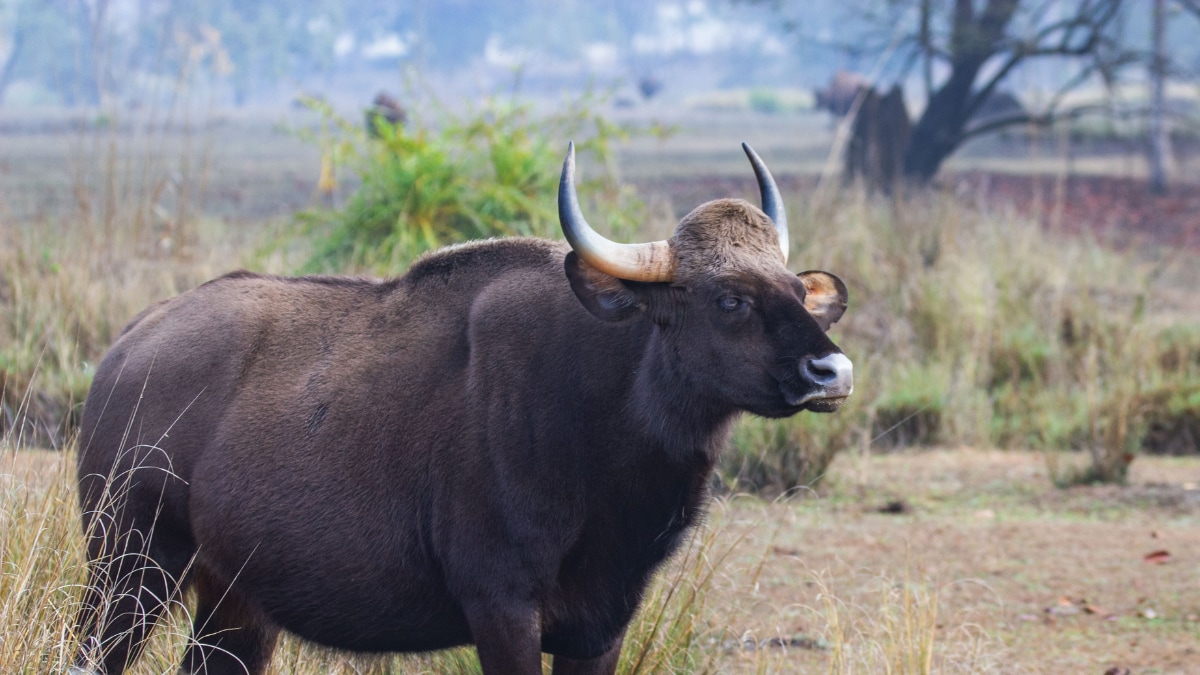


All wildlife species need space to move. But the rapidly-developing network of roads and infrastructure projects in Central India has been restricting the movement of some iconic species – resulting in small, isolated populations with poor gene flow – which has increased the threat of local extinctions.
Researchers from the Bengaluru-based National Centre for Biological Sciences (NCBS) studied two such iconic species – gaur and sambar – which are also listed as ‘vulnerable’ on the global IUCN list. The team collected hundreds of faecal samples from over six tiger reserves and wildlife sanctuaries spread across Madhya Pradesh and Maharashtra and studied their DNA using advanced genomic tools. The study also covered the much-touted wildlife corridor between Kanha and Pench Tiger Reserve.
“While charismatic carnivores like tigers, and leopards receive frequent spotlight, large herbivore (plant-eating) species which are as important and top prey species are often neglected. We wanted to understand how they are coping with these fast-changing changes in the landscape,” said lead author and conservation biologist Dr Abhinav Tyagi. The study published in Molecular Ecology is also the first to examine the genetic connectivity of large herbivores at a large landscape in India.
The findings showed that gaur is getting severely impacted by the changes in the land use, land cover, as well as high-traffic roads around these reserves. Their populations have become small, highly-fragmented with poor gene flow and, therefore, need urgent conservation attention or the risk of local extinction can go up.
The movement of sambar (deer) is getting restricted not just by the high-traffic roads, but also by increasing human presence. They recorded low levels of genetic diversity which is concerning because without it, the species will find it hard to adapt to sudden environmental changes, diseases or any other climate shifts.
“Conservation requires sustained connectivity, or gene flow between populations. Gaur is a huge animal, and a critical part of our ecosystem. Small, isolated population renders them highly vulnerable to local extinctions in future. So, they need to keep moving, and we must provide wildlife corridors which allow multiple endangered species to move, especially in priority landscapes like central India,” said senior author Professor Uma Ramakrishnan from NCBS.
Wildlife conservation happens from protected areas, but connectivity outside protected areas is equally important. The fast-growing network of roads, highways, railway lines, and changes in land use patterns, mining activities over the years have divided animal populations confining them to small patches, disconnected from each other. But it is critical that the animals move, as it results in mating and genetic exchange, the loss of which can increase the probability of species extinction.
While the Wildlife (Protection) Act restricts major developments in and around Tiger Reserves, which are designated as eco-sensitive zones, the provisions for construction and implementation of mitigation measures on roads and railway lines, which bisect crucial wildlife movement areas, are limited due to lack of data on animal movement. The study brings to light how different species respond to these changes, and calls for a shift from single-species to multi-species-based conservation approach, especially while developing wildlife corridors.
video-carouselvideo-carousel
“Despite the need for development to meet India’s economic goals, it is imperative to align development with conservation objectives for multiple species. For instance, low to medium-traffic roads may not act as an absolute barrier for movement of Tigers, but they seem to severely impact gaur and sambar. So, we need wildlife connectivity mitigation measures on smaller roads as well in addition to major state and national highways,” added Tyagi.
The study has also identified small, isolated populations of both species in the Central India landscape and recommended them for targeted conservation and management attention.
“Despite the need for development to meet India’s economic goals, it is imperative to align development with conservation objectives for multiple species. For instance, low to medium-traffic roads may not act as an absolute barrier for movement of Tigers, but they seem to severely impact gaur and sambar. So, we need wildlife connectivity mitigation measures on smaller roads as well in addition to major state and national highways,” added Tyagi.
The study has also identified small, isolated populations of both species in the Central India landscape and recommended them for targeted conservation and management attention.